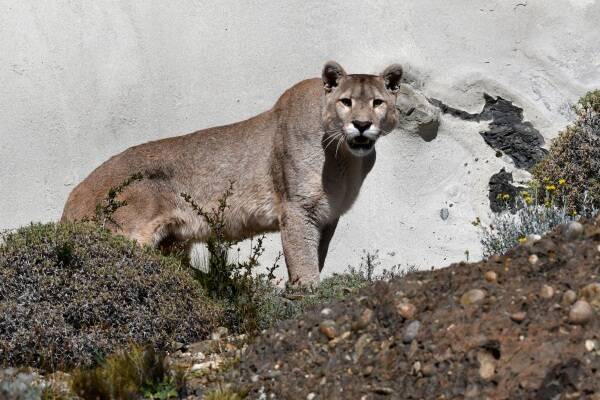





Copyright infringement not intended
Context: The cheetah, which is being re-introduced to India from Africa, is not to be confused with the leopard, which too has spots that look somewhat similar. Here’s a list of members of the ‘cat’ genus Panthera, Puma, and Acinonyx.
Details:
This is the genus of large wild cats that can roar, but can’t purr. Among them, the lion, the leopard, and the jaguar are more closely related, while the other strand has the tiger and the snow leopard. The snow leopard is an exception to the rest of the group in that it can’t roar.

Tiger (Panthera Tigris)
Size: 75-300 kg | Status: Endangered
Jim Corbett’s “large-hearted gentleman with boundless courage”, the solitary and strongly territorial tiger is the largest of all wild cats and also the earliest Panthera member to exist. Primarily a forest animal, they range from the Siberian taiga to the Sunderban delta. The national animal of India, Bangladesh, Malaysia, and South Korea, the tiger was voted the world’s favourite animal ahead of the dog in a 2004 Animal Planet global online poll.

Lion (Panthera Leo)
Size: 100-250 kg | Status: Vulnerable
Native to Africa and Asia, the lion is the most social cat, and lives in groups called prides. They prefer open forests such as scrubland, and adult males have a prominent mane. The lion is arguably the most widely recognised animal symbol in human culture — be it the Ashoka pillar in Sarnath, the main entrance to Buckingham Palace, or the 20th Century Fox and MGM logo.

Jaguar (Panthera Onca)
Size: 50-110 kg | Status: Near Threatened
The largest cat in the Americas, the Jaguar has the strongest bite force of all wild cats, enabling it to bite directly through the skull of its prey. Melanistic (black) Jaguars are common and are often called black panthers. Jaguar was a powerful motif in the Mayan and Aztec civilisations.

Leopard (Panthera Pardus)
Size: 30-90 kg | Status: Vulnerable
Similar in appearance to the Jaguar with a rosette patterned coat, the leopard was described by Jim Corbett as “the most beautiful of all animals” for its “grace of movement and beauty of colouring”. The most adaptable of all big cats, they occupy diverse habitats at all altitudes across Africa and Asia. Like black jaguars, melanistic leopards are called black panthers. In some African cultures, leopards are considered to be better hunters than lions.

Snow leopard (Panthera Uncia)
Size: 25-55 kg | Status: Vulnerable
The ghost of the mountains, this smokey-grey cat lives above the snow line in Central and South Asia. The most elusive of all big cats, it cannot roar, and has the longest tail of them all — which comes in handy for balance while hunting along the cliffs, and also gives warmth when wrapped around the body. The snow leopard is the state animal of Ladakh and Himachal Pradesh.
Closely related to the domestic cat, this genus has only one extant species, the cougar.

Cougar (Puma concolor)
Size: 40-100 kg | Status: Least Concern
The cougar is the second-largest cat in the Americas. (The Jaguar is the largest.) Cougars are also called ‘mountain lion’ and ‘panther’ across their range from the Canadian Yukon to the Southern Andes. Concolor is latin for “of uniform colour”. The Incas designed the city of Cusco in the shape of a cougar.
This is a unique genus within the cat family, with only one living member, the cheetah.

Cheetah (Acinonyx jubatus)
Size: 20-70 kg | Status: Vulnerable
The fastest land mammal, the cheetah is the only cat without retractable claws — the grip helps it accelerate faster than any sports car (0-100 km/hr in 3 seconds). Cheetahs are not aggressive towards humans, and they have been tamed since the Sumerian era. They don’t breed well in captivity — picky females play hard to get. Cheetahs are not really big, and they hunt during the day to avoid competing with other big cats.






© 2026 iasgyan. All right reserved